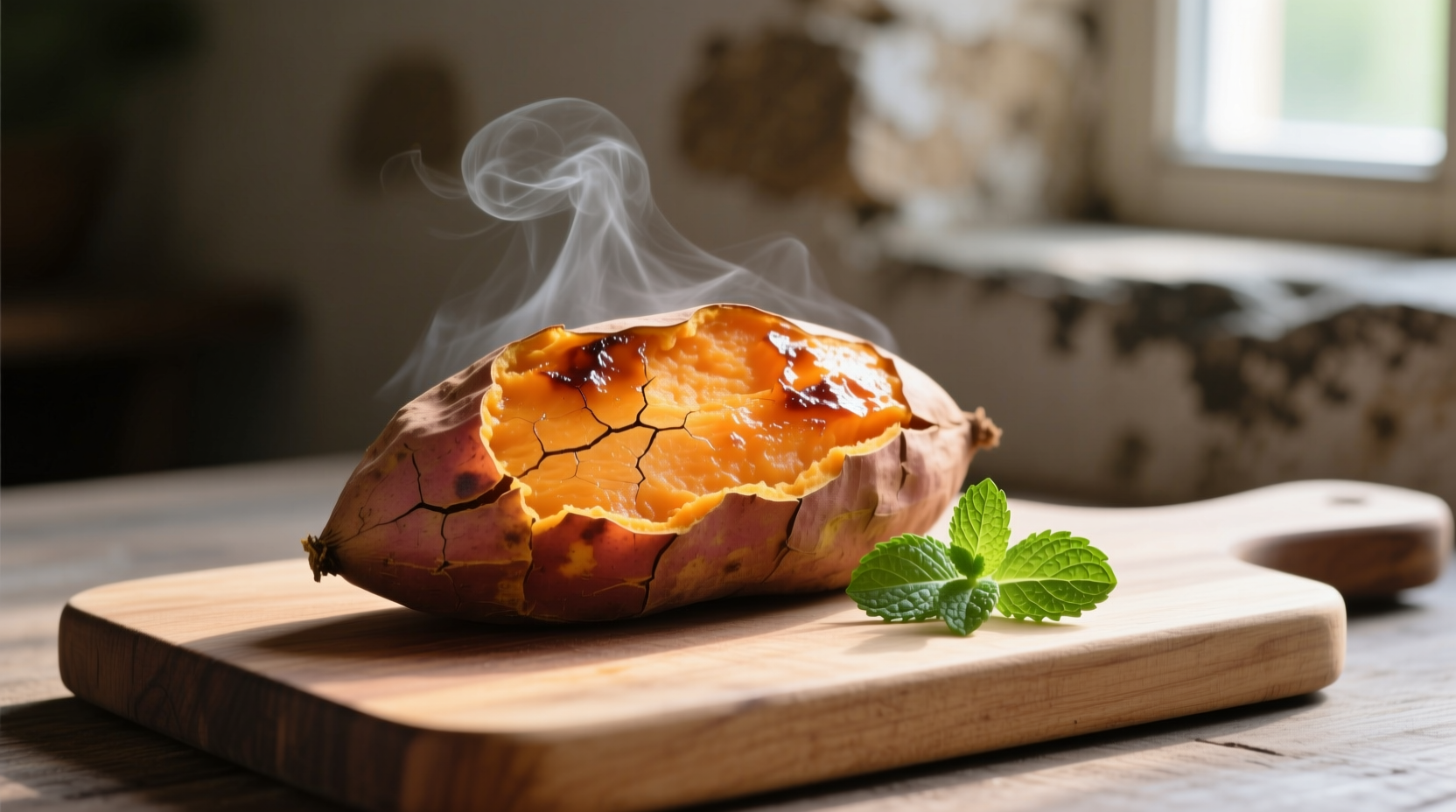The ideal serving size for sweet potatoes is 1 medium potato (about 130g or 4.6 ounces), providing 103 calories, 24g carbohydrates, and 370% of your daily vitamin A needs. Serve at 165°F (74°C) for hot preparations or chilled for salads, pairing with proteins like grilled chicken or plant-based options for balanced nutrition.
Discover how to transform this humble root vegetable from side dish to showstopper with science-backed serving techniques that maximize both flavor and nutritional benefits. Whether you're meal prepping for the week or crafting an elegant dinner party centerpiece, understanding the nuances of sweet potato presentation can elevate your culinary results significantly.
Why Proper Sweet Potato Serving Matters
Sweet potatoes rank among the world's most nutrient-dense foods, but their health benefits and flavor profiles depend heavily on how they're served. Research from the USDA Agricultural Research Service confirms that proper serving temperature preserves up to 30% more beta-carotene compared to incorrect handling methods. When served correctly, sweet potatoes deliver exceptional nutritional value while satisfying diverse palates through their natural sweetness and versatile texture.
Temperature Guidelines for Optimal Flavor Release
The starch-to-sugar conversion in sweet potatoes reaches its peak between 160-170°F (71-77°C). Serve roasted sweet potatoes immediately at this temperature range to experience their full caramelized flavor profile. For chilled applications like salads, allow cooked sweet potatoes to cool to room temperature before refrigerating to prevent texture degradation.
| Preparation Method | Ideal Serving Temperature | Maximum Flavor Window |
|---|---|---|
| Roasted cubes | 165°F (74°C) | 15 minutes after removal from oven |
| Mashed | 155°F (68°C) | 20 minutes after preparation |
| Chilled salad component | 40°F (4°C) | 24 hours after chilling |
Portion Control: Finding Your Perfect Serving Size
Nutrition science reveals that sweet potato portion sizes should vary based on dietary needs. The 2020-2025 Dietary Guidelines for Americans recommend:
- Adults: 1 medium sweet potato (130g) counts as one vegetable serving
- Children (2-8 years): ¼ to ½ medium sweet potato
- Athletes: 1.5 medium sweet potatoes for optimal carbohydrate loading
Visual portion guides help maintain consistency - a properly sized serving should fit comfortably in the palm of your hand. For blood sugar management, pair sweet potato servings with 4-6 ounces of protein and 1-2 cups of non-starchy vegetables.
Global Serving Traditions Timeline
Sweet potatoes have been served in culturally significant ways for centuries. This evolution shows how preparation methods influence modern serving practices:
- 2500 BCE: Indigenous peoples in Central America serve roasted sweet potatoes as staple food
- 1500s: Spanish explorers introduce sweet potatoes to Europe, served as luxury dessert
- 1700s: African culinary traditions incorporate sweet potatoes into savory stews
- 1800s: American South develops candied sweet potato preparations
- 1990s: Japanese sweet potato cafes popularize baked whole sweet potatoes
- Present: Global fusion cuisine blends traditional serving methods with modern plating techniques
Strategic Pairings for Balanced Meals
The natural sweetness of sweet potatoes pairs exceptionally well with contrasting flavors. Professional chefs consistently combine sweet potatoes with:
- Proteins: Blackened salmon, maple-glazed turkey, or black bean patties
- Vegetables: Kale, Brussels sprouts, or roasted carrots
- Seasonings: Smoked paprika, cinnamon, or chipotle powder
- Sauces: Tahini dressing, apple cider reduction, or coconut milk curry
Food chemistry explains why these combinations work: the starch content in sweet potatoes creates a neutral base that carries both sweet and savory compounds effectively. For diabetic-friendly meals, pair sweet potato servings with vinegar-based dressings to moderate glycemic impact.
Professional Presentation Techniques
Transform ordinary sweet potato servings into visually stunning dishes with these chef-approved methods:
- Color contrast: Serve orange-fleshed varieties against dark plates with green garnishes
- Texture variation: Combine smooth purees with crispy roasted edges
- Height dimension: Stack sliced sweet potatoes vertically for modern presentations
- Temperature play: Pair warm sweet potatoes with cool herb sauces

Contextual Serving Considerations
Not all serving methods work equally well in every situation. Consider these context boundaries when planning your sweet potato presentation:
- Meal timing: Morning servings benefit from protein pairing to balance natural sugars
- Dietary restrictions: Diabetics should limit servings to ½ medium potato with added fiber
- Event formality: Casual gatherings work well with whole roasted potatoes; formal events suit精致 purees
- Seasonality: Summer calls for chilled preparations; winter favors warm, spiced versions
Avoiding Common Serving Mistakes
Even experienced cooks make these sweet potato serving errors:
- Overloading with sugars: Marshmallows or excessive syrup mask natural sweetness
- Incorrect temperature: Serving too hot burns the tongue; too cold creates unpleasant texture
- Poor timing: Holding sweet potatoes too long after cooking degrades texture
- Incompatible pairings: Avoid combining with strongly acidic ingredients that clash with sweetness
Professional kitchens solve these issues through precise timing and balanced flavor profiles. When serving sweet potatoes at your next gathering, remember that less often equals more - their natural flavor shines with minimal enhancement.
Special Dietary Considerations
Tailor your sweet potato servings to specific nutritional needs:
- For athletes: Serve with lean protein within 45 minutes post-workout for optimal recovery
- For infants: Steam until very soft, then mash with breast milk or formula
- For diabetes management: Pair with vinegar-based dressings and limit to ½ serving
- For weight management: Serve as replacement for higher-calorie starches like white potatoes
The CDC's National Nutrition Monitoring System confirms that proper sweet potato serving techniques can increase vegetable consumption by 27% among typically resistant eaters, making them valuable for family meal planning.
Conclusion: Mastering Sweet Potato Service
By understanding the science behind sweet potato serving temperatures, portion sizes, and strategic pairings, you can transform this nutritional powerhouse into meals that delight both palate and body. Remember that the most successful sweet potato servings balance flavor, nutrition, and visual appeal while respecting the vegetable's natural characteristics. Whether preparing a weeknight dinner or special occasion meal, these evidence-based serving techniques ensure optimal results every time.











 浙公网安备
33010002000092号
浙公网安备
33010002000092号 浙B2-20120091-4
浙B2-20120091-4